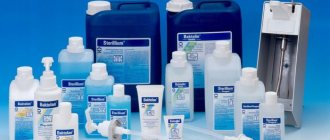To neutralize toxic gases emitted from the internal combustion engine, the car is equipped with a catalytic converter installed at the outlet of the exhaust manifold. Although the service life of the element is about 150 thousand km, it is quite expensive to change it - the spare part is too expensive. A natural question arises whether it is possible to clean the catalyst and thus extend its service life. Answer: cleaning is acceptable, but there is no guarantee of a positive result. The problem is common and deserves more detailed consideration.
A little about harmful emissions
It is worth mentioning that all modern cars have catalysts. And this is by no means a whim of some manufacturers, not a curiosity, but a real necessity. There are billions of cars on Earth, all of which emit tons of harmful substances into the atmosphere. And environmentalists have been sounding the alarm for a long time, and not in vain - we need to make transport safer and cleaner. There are several ways to do this. For example, install an electric motor instead of a gasoline one. But there are just problems with charging, and the price of such cars is fantastic.
It turns out that it is much easier to slightly modernize a gasoline engine - to reduce the amount of harmful compounds in the exhaust. However, we managed to do this; at the moment there are several standards, which are called Euro-1, Euro-2, etc. And all cars are classified according to this criterion. If we emit into the atmosphere those compounds that remain immediately after fuel combustion, our planet will soon be enveloped in a black cloud.
But if you purify the gases, you will end up with almost clean air that you can breathe without harm. By the way, when running on natural gas, a car emits much less harmful components than when running on gasoline. But today it is quite difficult to legitimize cars running on such fuel.
How not to clean your device
Often, drivers rushing to solve the problem with a contaminated catalyst as quickly as possible are driven by elementary haste. In order to save money and time, they unreasonably abandon time-tested methods by purchasing truly reliable cleaning products and resort to clearly dubious options that only aggravate the situation.
For example, additional holes are punched or drilled in the catalyst. In part, this actually helps to slightly revive the lost engine power, but the environmental component of its operation, namely the volume of harmful substances emitted into the atmosphere, in such a “leaky” format will be terrifying. In addition, while driving, the noise in the exhaust pipe will rise sharply. It is clear that truly economical drivers do not resort to such unacceptable options - they protect both their car and the environment.
What is a neutralizer?
This is a device that slightly resembles a resonator tank in appearance. It has two pipes - inlet and outlet. Inside the device there are honeycombs made of ceramics, which are coated with a thin layer of precious metals. Actually, it is only because of this sputtering that the price of catalysts is so high. Gradually, gases passing through the neutralizer clog the cells.
The result is that the exhaust simply has nowhere to go. And if the catalyst is clogged, then it can be cleaned or washed - this is logical. But not every car owner knows how to wash a car’s catalyst. However, not everyone needs this; many install a new one and don’t bother.
How to clean the catalyst on a car? Several proven methods
Every motorist who is not too indifferent to the state of the air and the cleanliness of the environment is searching for a suitable way to clean the catalyst on a car.
The catalytic converter was invented by auto engineers to convert whatever is harmful in the exhaust into something less toxic. Considering the average state of Russian gasoline, most people simply don’t have the conscience to pull out and throw away the device. Although there are some. However, by removing one component from an established and calculated system, even if it is not directly involved in ensuring driving performance, the driver who is indifferent to the environment loses something: the dynamics of the car drops somewhat, and the engine heats up more. At the same time, comfort also suffers: the unit operates noisier, noticeable vibration appears in the cabin, and the car starts with a jerk.
What it consists of and how it works
Structurally, the catalytic converter is a honeycomb-shaped ceramic substrate inserted into a metal casing and protected by heat-insulating materials.
The small cells of the device have a special coating - the working composition. The composition covering the honeycomb is an alloy of platinum, rhodium and palladium, precious metals whose value is at least twice that of gold. The honeycomb design of the catalyst increases the area of contact of toxic gases with the surface that neutralizes them. Remains of harmful substances burn out instantly and do not enter the atmosphere.
The catalyst consists of the following parts:
- Housing with inlet and outlet pipes;
- Ceramic block with a porous structure;
- Catalytic layer – spraying on the cells of a ceramic block;
- Sensor (lambda probe) – a device that shows the contamination of gases after cleaning;
- Metal casing - serves as thermal insulation and protects the housing from mechanical damage.
The part is installed after the engine exhaust pipe or in the exhaust manifold flange. This arrangement is necessary for efficient operation of the catalyst, since neutralization of toxic substances is possible only at high temperatures. The node works as follows:
- Exhaust gases are directed through the inlet pipe into the part and onto the ceramic block, filling the cells.
- Catalyst metals oxidize unburned hydrocarbons and carbon monoxide.
- The reducing metal rhodium neutralizes nitric oxide and turns it into a harmless substance.
- Clean gas is released into the atmosphere through the outlet pipe.
It is important! The temperature of the process plays a decisive role in the process of neutralizing toxic substances. Conversion is possible at temperatures from 300 degrees, but generally the operating temperature of a car catalyst is in the range from 400 to 800 degrees.
When the engine warms up, the catalyst is inactive, and this is a significant drawback of the models developed to date. The difficulty in organizing the correct operation of the unit lies in the danger of its overheating. If the catalyst is located closer to the engine, the service life will sharply decrease due to systematic overheating. Most automakers place the part in the area of the right front wheel, where it is possible to maintain the temperature at an optimal level.
Catalyst maintenance rules
To wash a contaminated catalyst yourself, you will first have to remove it. The car needs to be driven into an inspection hole, the lambda probes in it must be turned off and the clamps that hold the device on the exhaust manifold or exhaust pipe must be removed. Further manipulations are carried out according to the following principle:
- First, the neutralizer can be purged from all sides under a pressure of 7-9 bar.
- The honeycomb must then be filled with ABRO foam spray. It must be poured into two pipes at once.
- After this, the neutralizer needs to be wrapped in a rag and wait about half an hour.
- When 30 minutes have passed, the internal mesh of the part must be rinsed with water and thoroughly blown.
- The operation should be repeated. Then the catalyst should be dried and make sure that the cells can be seen through. Only after this can the element be placed in its original place in the car.
If a foam aerosol does not help solve the problem, then you can try soaking the part in diesel fuel or kerosene for a day. Additionally, you can add a little acetone to the diesel fuel. After 24 hours, you can try again to clean the element with an aerosol preparation.
Pros and cons of KN
The only plus is the reduction in toxicity of car exhaust. A car without a CN will most likely not be allowed into EU countries. The downside is a decrease in engine power and response, because the catalyst is essentially a ceramic mesh (honeycomb) with a small cell size. Therefore, even a clean and not clogged with soot CN exhibits significant resistance to the movement of gases, so part of the engine energy is spent on pushing the exhaust outward. Another disadvantage is the short service life (even in the EU it rarely exceeds 80 thousand kilometers, and in Russia most often no more than 50 thousand) at a considerable price (from 100 thousand rubles). In addition, cars where the CN is provided but not installed will not be able to officially pass inspection.
When to clean
The unit, which looks similar to a resonator tank, is a container with two connecting pipes. Inside there are small ceramic honeycombs coated with a catalytic layer based on noble metals (hence the high price of the spare part). Exhaust flue gases clog the cells with soot and carbon deposits, gradually making the neutralizer impassable.
Cleaning or washing the catalyst will give a positive result and extend the life of the element in the following cases:
- If the procedure is performed as a preventive measure, long before a problem occurs.
- When the honeycomb is not damaged and is simply clogged with soot (the initial stage of element wear).
- If the ceramic structure is not melted due to the use of leaded gasoline.
In other cases, the neutralizer in the car will have to be replaced with a new one or a cheaper flame arrester plus an emulator for the correct operation of the lambda probe installed.
Clogging of the element's flow area is characterized by the following symptoms:
- the engine noticeably loses power, acceleration becomes sluggish;
- fuel consumption, on the contrary, is increasing;
- difficulty starting the engine;
- Unreasonable engine stop at idle.
In a car equipped with two lambda probes, the problem is indicated by the Check Engine indicator on the driver's dashboard. The electronics detects a decrease in the performance of the converter and generates a corresponding error.
For reliability, you can use a personal ODB-2 autoscanner. For example, we can recommend the Korean-made Scan Tool Pro Black Edition.
The following errors will indicate a problem with the neutralizer: P0430, P0420. Also, using this auto scanner, you can track readings from both lambda probes, other sensors, and much more in real time. The scanner is compatible with most cars produced in 1993 and is quite easy to use. In the right hands, this device can replace full-fledged diagnostics at a service station and save money on visiting it.
To successfully clean the catalyst, it is important to catch the moment when the ceramic filling has not yet become unusable. Hence the recommendation - it is better to rinse the element in advance, without waiting for alarm signals. The procedure will require a minimum of effort and financial costs on the part of the car owner.
Do-it-yourself catalyst repair
If diagnostics have been carried out which show that the catalyst is clogged and the resistance to the passage of exhaust gases has increased significantly, then the catalyst needs to be flushed. If flushing is not possible (in case of mechanical damage), then the catalyst will have to be replaced; if replacing the catalyst is not economically feasible, the catalyst will have to be removed.
Most modern cars are equipped with two neutralizers: main and preliminary.
Theoretically, catalytic converters are harmful for the engine, since the resistance of the exhaust tract increases significantly, and in order to maintain the required temperature of the catalyst in some modes, it becomes necessary to enrich the mixture.
As a result, this leads to a noticeable decrease in engine performance in terms of fuel consumption and power. But sometimes simply removing the catalyst can make the situation worse, since the exhaust gas treatment system on most cars is tightly connected to the engine management system. There is a possibility that the engine will operate in emergency mode (CHECK ENGINE), which will undoubtedly lead to limited power, as well as increased fuel consumption.
In the event that you decide to remove the catalyst, you first need to find out about the likely consequences and methods that will help you circumvent them. It is advisable to communicate with the owners of the same cars (there are a huge number of clubs for fans of cars of a certain brand on the Internet).
In general, in the case indicated in the diagram, the first oxygen sensor does not monitor the condition of the catalysts, removing the latter will not affect its readings in any way, the second temperature sensor will have to be deceived, for this we install a screw under the sensor, we do this so that the sensor readings without a catalyst were equal to or approximately those that were with the catalyst installed. If the second sensor is also a lambda, you need to be more careful, since after removing the catalyst, the engine control unit will most likely need to be reflashed (in some cases, a correction can be made).
In the case shown in the diagram, the sensor readings are influenced by the state of the pre-catalyst. Thus, it would be more correct to remove the main catalyst and wash the preliminary one. As a result, we will get the minimum resistance of the exhaust tract, these changes will not have any effect on the engine management system, but when screwing in the screw, the readings of the exhaust gas temperature sensor will be erroneous and this is not good. But this is all theory, but in practice it is necessary to take into account the state of the catalyst honeycomb.
We draw up a work plan - we wash the preliminary catalyst and remove the main one, and that’s it, we can start.
The first thing you need to do is remove the exhaust manifold; the pre-catalyst is integrated into it:
The honeycombs are long but rather thin channels, so we diagnose their condition carefully in the light; it is advisable to use a small but fairly bright light source, the voltage of which does not exceed 12V (we follow safety rules).
The condition of the cells is almost ideal for a mileage of 200 thousand km.
When checking for light, a small defect was discovered, it does not pose any danger or harm:
We carry out flushing if there is no mechanical damage (this includes subsidence, burnout, etc.), or the presence of deposits that significantly reduce the flow area. The honeycombs must be thoroughly blown out with carburetor spray.
If there are a lot of deposits, then after blowing with a spray the catalyst can be soaked overnight in a container with diesel fuel. After which, repeat the purging. Don't forget about the exhaust gas recirculation channel (another dirty trick from environmentalists):
If you still remove the pre-catalyst, then the channel will have to be thoroughly rinsed, since the crumbs formed during removal can get into the intake, and from there into the cylinders (it’s easy to guess that the cylinder mirror will suffer quite a bit).
All operations that are carried out with the main catalyst are similar to the operations described using the example of the preliminary catalyst.
Next, we begin the assembly, we need to assemble it in the reverse order, the gaskets must be new or very well cleaned old ones, we assemble them carefully, do not forget anything.
Symptoms of pollution
A prudent car owner will never wait until the catalyst gets dirty and stops performing the tasks assigned to it as it should. He systematically monitors his condition so that the situation does not reach an extreme point. Many drivers are interested in how to check the catalyst. To do this, you need to constantly monitor how the car operates. There are symptoms determined by practice by which one can determine his condition. Typical signs of a car catalyst malfunction, according to experts, are the following:
- when the vehicle is moving, there is an unexpected decrease in its power;
- the car picks up speed poorly for no apparent reason;
- from time to time unexpected difficulties arise with starting the engine;
- the engine begins to act up when idling;
- There are times when the engine turns off spontaneously and stalls;
- increased, as opposed to natural, fuel consumption is recorded;
- The Check Engine warning light comes on.
If at least one of these characteristic symptoms is present, especially a complex of them, the motorist needs to carefully examine the catalyst without delay - most likely, it is clogged.
What indicates contamination
Quite often, washing the catalyst is carried out on domestic cars and on old foreign cars. But this can also be true for fairly new cars. Here it is logical to check the catalyst for clogging and make a diagnosis.
The average lifespan of a neutralizer is 100-150 thousand kilometers. But with proper care and using high-quality fuel, it can last much longer.
If the system is clogged, you can try to clean it. But sometimes the only solution is replacement.
The fact that the catalyst needs cleaning is confirmed by several characteristic symptoms:
- the engine loses power;
- the car accelerates more slowly;
- there are difficulties starting the engine;
- The internal combustion engine behaves unstable at idle;
- the engine may turn off spontaneously;
- the level of fuel consumption increases;
- The check engine light is on;
- the color of the exhaust changes.
The last symptom is relevant if the system is really clogged.
This can happen on cars such as Lada Granta, Renault Duster, VAZ 2110 and more.
Of course, you can remove the catalyst altogether, but it is important to understand the possible consequences. We have already written about them.
It is best to check the condition by dismantling and visually assessing the condition. If contaminants have formed on the honeycombs, then they should be removed. This will extend the life of the neutralizer.
Cleaning methods
Car repair specialists practice the following options for cleaning the catalytic converter:
- preventive cleaning with detergent;
- repeated washing;
- mechanical cleaning.
Preventive cleaning is usually carried out at a mileage of 70–80 thousand km. This method allows you to do without dismantling the part. Typically a Hi-Gear HG3270 type fluid is used.
Repeated washing is used to clean a heavily contaminated element. In order to clean the converter in this way, you will need to disassemble part of the car's exhaust system. This method mainly uses ABRO type liquid.
Mechanical cleaning is carried out using a compressor and a brush. This option for cleaning the catalytic converter is also performed on a dismantled section of the exhaust pipe.
The need for mechanical cleaning arises when it is not possible to remove contamination by washing the part.
How to clean it without removing it from the car?
The most suitable liquid for cleaning the catalyst is Hi-Gear HG3270.
This professional product allows you not only to effectively remove carbon deposits on the elements of the car exhaust system, but also to clean the carburetor, fuel line and tank of the car from deposits.
After using the Hi-Gear cleaner, the following positive changes are observed in various vehicle systems:
- carbon deposits are removed;
- engine power increases;
- fuel consumption is reduced;
- the toxicity of exhaust gases is reduced;
- Increased fuel detonation is eliminated.
All these transformations are possible only if only the original product is used to clean the catalyst. You should also pay close attention to the recommendations for using Hi-Gear.
Instructions for use of Hi-Gear cleaner
Cleaning a car catalyst using Hi-Gear HG3270 will only be successful if the following conditions are met:
- Fill the gas tank 1/3 full.
- Pour Hi-Gear cleaner into the gas tank.
- Fill the tank to 100%.
- Operate the machine until the entire volume of fuel is completely exhausted.
One package of Hi-Gear is enough to fill a fuel tank with a volume of 60 - 70 liters.
To obtain the maximum effect, it is not recommended to refuel the car while using fuel with an additive. Otherwise, the concentration of the active substance will decrease, which will negatively affect the process of removing deposits formed on the catalyst cells.
Many experts recommend injector cleaner as a preventive measure, regardless of the vehicle model.
Experts believe that catalyst washing is very effective and easy to use. In their opinion, it is undoubtedly possible to use flushing as often as recommended by the manufacturer, but it is not at all necessary. They advise using flushing after about three, on the fourth lubrication change.
The advantage of this tool is that the operation can be performed independently even by a person who does not have in-depth knowledge about the structure of the car.
Reviews about the cleaner are mostly positive. Car enthusiasts talk about fairly effective catalyst cleaning and not a high price.
Mechanical method
Is it possible to wash the catalyst if this part is very dirty? In this case, it is better to use a mechanical method to clean the part.
This work is performed in the following sequence:
- The catalyst is removed from the exhaust system of the car.
- Contaminated honeycombs are carefully cleaned using fine sandpaper.
- The catalytic converter is purged with compressed air.
The mechanical method has proven to be especially effective when cleaning catalysts in diesel-powered vehicles. This part gets very dirty in such cars, so with a careful approach it is possible to restore the throughput of the product.
The work should be done very carefully so as not to damage the inside of the product, which is made of special ceramics.
Preparation and carrying out the procedure
What needs to be done to clean the catalyst:
- Determine how many of them are installed on the machine.
- Remove them from the vehicle exhaust system.
- Conduct inspection and troubleshooting to determine the extent of damage.
- If the pollution is severe, then carry out a comprehensive cleaning, rinse the injectors and catalyst.
- Treat contaminants that cannot be cleaned with chemicals with sandpaper.
To make the catalyst last longer, do not pour low-quality oil into the engine. It should only be from the list of fuels and lubricants approved by the manufacturer. Fuel of unsatisfactory quality also contributes to a reduction in the service life of the exhaust system.
If the technician cleaned the neutralizer mesh poorly, this will be indicated by the squeak of the “Check Engine” indicator. Catalytic converters cost a lot, but it is better to avoid the temptation to remove them from the system, since the correct operation of the car as a whole may be disrupted. In addition, there are a lot of Chinese counterfeits on the market, so it would be wiser to keep the original unit on the car, extending its service life if possible. After cleaning the catalyst, its service life increases by one to two oil changes.
Step by step guide
As for professional tools like Hi-Gear, all you need to do is pour the contents of the cylinder into the gas tank. Then the chemicals will do everything themselves, you don’t need to interfere with the process. But how to wash the catalyst if it is not possible to use such products?
First of all, you need to disconnect the oxygen sensors and loosen the clamps that hold the catalyst. Then perform a few manipulations:
- At the first step, you will need a compressor capable of pumping up about 9 bar of pressure. You need to thoroughly blow out the neutralizer on both sides.
- Using fine sandpaper, carefully sand the outer surfaces of the honeycomb.
- Fill the honeycomb with carburetor cleaning foam.
- Wrap the unit in a rag and wait 15-20 minutes.
- Turn on the hot water and wash all the insides, after which you will need to dry everything with a compressor.
- If necessary, the manipulations are repeated several times until all cells are viewed.
We looked at how to wash the catalyst with your own hands. But it is quite possible that the dirt cannot be cleaned; the aerosol for carburetors does not work. Therefore, it is permissible to resort to extreme measures. To do this, dilute kerosene with solvent 646 or acetone (in a ratio of 4 to 1). Immerse the catalyst in this composition for about a day, then repeat cleaning with air and aerosol.
Engine overhaul: when is it necessary?
- prepare a plastic container where the catalyst will fit;
- dismantle the unit itself;
- inspect for possible damage;
- pour the honeycomb generously with liquid cleaner;
- wrap the element in fabric;
- place in a plastic container;
- after 20-30 minutes, rinse the honeycombs under running hot water;
- dry and blow with compressed air;
- repeat the procedure 1-2 more times.
When a carburetor cleaner does not help even after 1-2 procedures, it is worth using more aggressive agents. For example, kerosene.
Cleaning the catalyst with sandpaper
After removing the part, a thorough inspection is carried out. If it turns out that carbon deposits have slightly covered the honeycomb of the element, you can clean it with fine sandpaper.
The following accessories are needed for cleaning:
- sandpaper;
- small lamp;
- air compressor.
Before cleaning, it is important to understand that the honeycomb of the filter element is made of ceramic and is easily deformed under load, which can lead to failure of the entire catalyst. It is impossible to fix dents on honeycombs without damaging them, and you will have to buy a new catalyst. The lamp is installed from the outlet of the catalyst so that it can be seen how well the honeycombs are illuminated. Using slow, gentle movements, the filter is cleaned of carbon deposits. When all the cells are clean, the catalyst is purged with compressed air using a compressor.
Chemical cleaning
The most effective and most often used is washing the catalyst with carburetor products - “Carbcleaner” or “ ABRO CC-200”
" There is no need to be afraid that an aggressive environment will corrode the device: only, for example, “regia vodka” can etch it. Those who are cautious can be advised to use ethanol, although the processing will be much more expensive.
We proceed like this:
- The catalyst is removed and subjected to the strictest control;
- If the honeycomb is not destroyed and the device is found to be suitable, it is spilled with the selected product, the top and bottom are covered with improvised materials, and the catalyst is soaked for a quarter of an hour;
- Take a hand wash, turn on hot water under pressure, press down the jar with something heavy (but not too much, just so that it doesn’t fly away when the jet hits, and the honeycombs are not damaged) and rinses for 2 minutes on each side. In the absence of a sink, you can rinse the catalyst at home over a porcelain sink - but not over the bathtub (you will kill the enamel or acrylic) and not over the kitchen sink (the washed-off chemicals will corrode it). You'll be snatched away from the owner for stains, so it's better to borrow a Karcher from friends;
- The catalyst is dried (even better, blown with compressed air), and the treatment is repeated.
A sign of successful completion of the work will be transparent honeycombs and a mesh that is clean, like new. If there are too many deposits on the catalyst, after the first treatment with carburetor spray, it is left overnight in a bucket of kerosene or diesel fuel - whichever is easier for you to get. In the morning, repeated processing and washing are carried out.
What not to do
To begin with, I would like to say that you should not clean the catalyst at home, using your bathtub or sink. The chemicals are very aggressive, and therefore can damage the enamel of the bathroom and ruin decorative elements.
It is also strictly not recommended to drill holes in a clogged converter. Oddly enough, this will return power and stability to the engine. But on the other hand, the toxicity of exhaust gases will increase significantly and the noise level of the exhaust system will increase.
With prolonged use of a car with a drilled catalyst, the consequences can be much more serious. This will negatively affect the entire engine and associated systems.
Since the catalyst is quite expensive, not everyone wants to buy it to replace it. But a popular solution is to replace the catalyst with a flame arrester, which we have already told you about.
Be sure to leave your feedback and answers. Tell us about your own experience rebuilding your catalytic converter.
Mechanical methods
Sandpaper
In case of minor contamination, the catalyst filter can be cleaned using fine sandpaper:
- To do this you need to remove the neutralizer.
- Then carefully, avoiding strong pressure, clean the mesh from plaque.
- It is better to remove any remaining dirt using compressed air.
Drilling
Before restoring the catalyst by drilling, the likely adverse effects should be carefully assessed. It is likely that after such actions the motor will operate in emergency mode. This may increase fuel consumption and cause the engine to lose power. In addition, removing the device often requires adjustments to the power unit control unit.
The most convenient way would be to remove the main neutralizer and wash the preliminary one. In this case, you need to “deceive” the temperature sensor by screwing a bolt into it. Often such actions lead to distortion of temperature data.
Replacing the internal part
Modern car stores offer the internal part of the catalyst for a reasonable price, which is inserted inside the old housing. This method of restoration is the most optimal from an environmental point of view. At the same time, the cost of the replacement work itself is affordable for most car owners.
Thus, there are several ways to restore the catalytic converter. Each driver can analyze the information and choose the most convenient option for themselves.
When can self-cleaning be effective?
Before taking active steps, you need to find out in what cases cleaning this part can bring any benefit.
Flushing a car's catalyst with special liquids can be most effective when:
- Carrying out preventive measures.
- Severe clogging of the catalyst honeycomb with soot.
If the converter has not yet failed, but a slight decrease in engine power and an increase in fuel consumption are already noticeable, then chemical cleaning is performed to extend its service life.
If the honeycomb is heavily clogged, but there are no melts, this method can also significantly extend the life of the part. And also increase engine power and reduce fuel consumption.
Time to work on the catalyst
It is simply unrealistic to constantly remember ALL the activities that a car requires. Therefore, car owners focus on specific signs indicating that the time has come for certain procedures. Regarding cleaning the catalyst, these symptoms will be:
- increased fuel consumption;
Before cleaning, the catalyst must be removed and inspected. If subsidence, burnout and other damage to the device are detected, it is useless to wash it: it will not work and must be replaced with a new one.
Rating of the best cleaners
Choosing the best catalyst cleaner is often difficult, because the first question that arises is: which is better - a foam or a liquid additive. The following is a rating of popular cleaners used by domestic car owners. The list included only truly effective ones, about which positive reviews were found on the Internet, and real tests were also presented.
Hi Gear Catalytic Converter & Fuel System Cleaner
The Hi Gear Catalytic Converter & Fuel System Cleaner is rightfully considered one of the best in its market segment. It is intended not only for directly cleaning the catalyst, but also for cleaning the power system (combustion chambers) of injection engines. It is positioned as a professional product, that is, it can also be used at professional car services.
It is absolutely safe for oxygen sensors. The cleaning agents included in it not only wash away soot from the catalyst, but also remove debris from the gas tank, the surface of the intake tract elements, the throttle valve, the intake valves, and the walls of the combustion chambers.
Thanks to the use of the High Gear catalyst cleaner, the hydrodynamic resistance of the intake system is reduced, engine power is restored, its speed is stabilized, and the toxicity of exhaust gases is reduced.
Hi Gear is a classic liquid cleaner that you add to your gas tank before refueling. One jar is enough for 65...75 liters of gasoline. If the gas tank is smaller or is not completely filled, then the volume of cleaner should be filled according to the calculated proportion. It is recommended to use the cleaner every 5000...7000 kilometers.
Reviews and tests found on the Internet show that the High Gear catalyst cleaner cleans the catalyst honeycombs really well. The car accelerates faster, gasoline consumption decreases, and engine speed stabilizes. Among the shortcomings, it can be noted that the manufacturer, most likely, clearly underestimated the frequency of use in its own commercial interests. In practice, the cleaner can be used for prevention after 10 thousand kilometers.
Liqui Moly Catalytic System Clean
The catalyst cleaner additive Liqui Moly Catalytic System Clean is the second most popular product in this segment. It is designed not only to remove soot from the catalyst, but also to prevent its reappearance. In addition, the product cleans the co-processing system, valves and combustion chamber. Can be used for any gasoline engines with a catalyst, including those equipped with turbocharging.
Please note that the manufacturer explicitly states that using an additive cannot remove deposits based on manganese oxide in the catalyst! Car enthusiasts, in their reviews of testing the Liqui Molly catalyst cleaner, note that the additive really returns power to the engine, reduces gasoline consumption, and the engine begins to run smoother. Among the disadvantages, it can be noted that the additive can no longer clean heavily contaminated catalysts, but this is the property of most similar products.
Liqui moly 7110 catalyst cleaner is sold on the market in a 300 ml jar. The manufacturer indicates that it is enough for 70 liters of gasoline. You can fill it not only before refueling, but at any time, the main thing is to maintain the proportion by volume. Product code - (LM7110). The price of one can for the above period is about 520 rubles.
Gat Cat Clean
Gat Cat Clean is positioned as a catalyst and oxygen sensor (lambda probe) cleaner. Can be used on gasoline and diesel engines with a DPF particulate filter, and can also be used in hybrid vehicles. In addition, it cleans the elements of the fuel system. Thanks to the use of the Jet Cat Clean cleaner, tar and coke deposits are removed from the catalyst, carbon deposits are removed, the likelihood of corrosion on the metal (including electrochemical corrosion) is reduced, and the toxicity of exhaust gases is reduced.
The basic principle of operation is the use of chemical compounds that reduce the combustion temperature of soot elements to +450°C, due to which they burn out much earlier than under standard conditions. Can be used with any type of fuel. 300 milliliters of cleaner is enough to dissolve in 60 liters of fuel. The effect lasts up to 3000 km, after which the prevention must be repeated.
Tests of the Gat Cat Clean catalyst cleaner showed good effectiveness of the product. Good performance is compensated by its versatility, since it can be used for any motor. A significant drawback is the clearly inflated price compared to competitors' analogues.
The volume of one jar sold on sale is 300 ml. The article number for its purchase is 62073. The price of one package is 1200 rubles.
Lavr
The multifunctional additive Lavr is positioned as a professional tool for improving the performance properties of fuel. In essence, it is a preventative agent that prevents clogging of fuel system elements, including the catalyst. The additive contains a combustion catalyst, due to which the fuel mixture burns completely and leaves minimal deposits. The Laurel additive can be used for gasoline injection and carburetor engines. Increases gasoline detergency, prevents icing, reduces the formation of soot, and reduces exhaust toxicity.
Practical use of the Lavr additive shows that its detergents are very mediocre, including for washing the catalyst. That is, if you use it on an ongoing basis, you can really increase engine power and maintain its cleanliness. However, it can hardly be used to clean clogged catalysts, only for prevention. Fortunately, its low price allows you to fill it into the tank on an ongoing basis.
The volume of one can of Lavr fuel system cleaner is 310 ml. This amount is designed for mixing with 40...60 liters of gasoline. The price of one package is about 330 rubles.
Pro Tec DPF Catalyst Cleaner
Pro Tec DPF Catalyst Cleaner is positioned by the manufacturer as a particulate filter and catalyst cleaner. A special feature of the product is that the cleaner is foamy, that is, it is blown through a hose directly into the catalyst. For this, a mounting hole for an oxygen or temperature sensor is used, which must be removed before the procedure. Protek cleaner can also be used to clean EGR system elements.
The principle of its operation is that it decarbonizes deposits in the catalyst honeycombs and promotes the regeneration of the particulate filter. Removal and disassembly of the catalyst and particulate filter is not required. The foam evaporates without a trace. After the foam has been blown into the catalyst, you need to start the engine and wait until all (or almost all) the foam and dirt flows out of the exhaust pipe. You need to blow out the foam with the engine off!
Tests of the Protek foam catalyst cleaner and particulate filter show its high efficiency. The product can be used for almost any engine. One container is intended for one use; the product cannot be left for reuse. The only disadvantage is the obviously high price compared to liquid cleaners, but the result is worth it.
The volume of one bottle is 400 ml. The kit includes an aerosol can with a spray probe, as well as a flexible hose. Can be used for engines of any size. If the last foam flowing from the exhaust pipe is still dirty, it is recommended to reuse the cleaner. The price of one package is about 2000 rubles.
The technology of using Pro Tec DPF Catalyst Cleaner foam cleaner involves the subsequent preventive use of Pro Tec OXICAT. This is a liquid catalyst and oxygen sensor cleaner. Can be used immediately, but is less effective than Pro Tec DPF Catalyst Cleaner, so it is recommended only as a preventive measure.
How to check if the catalyst is clogged
The clogging of the catalyst, and therefore the advisability of using an additive to clean it, can be determined independently without dismantling using a pressure gauge. It is necessary to measure the back pressure at the inlet of the catalyst. They do this in several ways.
The pressure gauge itself, through an adapter, can be screwed either into a special hole (on some catalysts that are located under the bottom of the car, there is often a special hole closed with a plug) or into the mounting hole of the oxygen sensor (when the catalyst is located in the engine compartment).
To make a device for checking the catalyst with your own hands you need:
- a pressure gauge with a maximum measurement range of 0.3...0.5 kgf/cm² (it is important that it has the appropriate scale division);
- connect it tightly to a fitting with an internal diameter of half an inch and a 10 mm hose (the easiest way is to use FUM tape);
- connects to the hose (in this case, the characteristics of the hose are not important, the main thing is that the diameter does not differ much from the diameter of the fitting);
- to the other end of the hose you need to attach an M18 fitting through a clamp.
Then, unscrew the lambda probe (oxygen sensor) in front of the catalyst, screw the device in there and look at the indicator after starting the engine and holding the gas at maximum speed.
If the catalyst is clean and does not need cleaning, then the pressure should not exceed 0.2-0.3 kgf/cm² at 5000 rpm (at idle 0.1 kgf/cm²)
. When it is slightly larger (about 0.5 kgf/cm²), it makes sense to clean the catalyst, including using a special cleaner. Above 150 kPa, it is replaced or knocked out; it is no longer suitable for use and will only cause harm to the engine!
You can also assess the condition of the neutralizer visually, but to do this you will have to dismantle it or insert an endoscope (into the sensor hole). Such a check is required if the destruction of the internal element has begun. At specialized service stations, the condition of the catalyst is checked using an oscilloscope, analyzing not only the pressure, but also the voltage on the oxygen sensors.
If the indications for forced cleaning are positive, using a special product, you can use two types of it - a fuel additive, which simply raises the temperature inside the catalyst, thereby promoting the natural combustion of soot. Or use a foam catalyst cleaner, which is introduced using a tube through the holes of the oxygen sensor and dissolves the soot.
It is recommended to do this procedure every 15...20 thousand kilometers . And if the car uses bad fuel, then more often.
If its condition is critical, and it is almost falling apart, then any cleaner here will be powerless. Similar reasoning is also valid if the structure of a ceramic catalyst is melted, in particular, by vapors of leaded gasoline. In these cases, only the catalyst needs to be replaced. Therefore, you should not expect a miracle of recovery from the cleaner!











